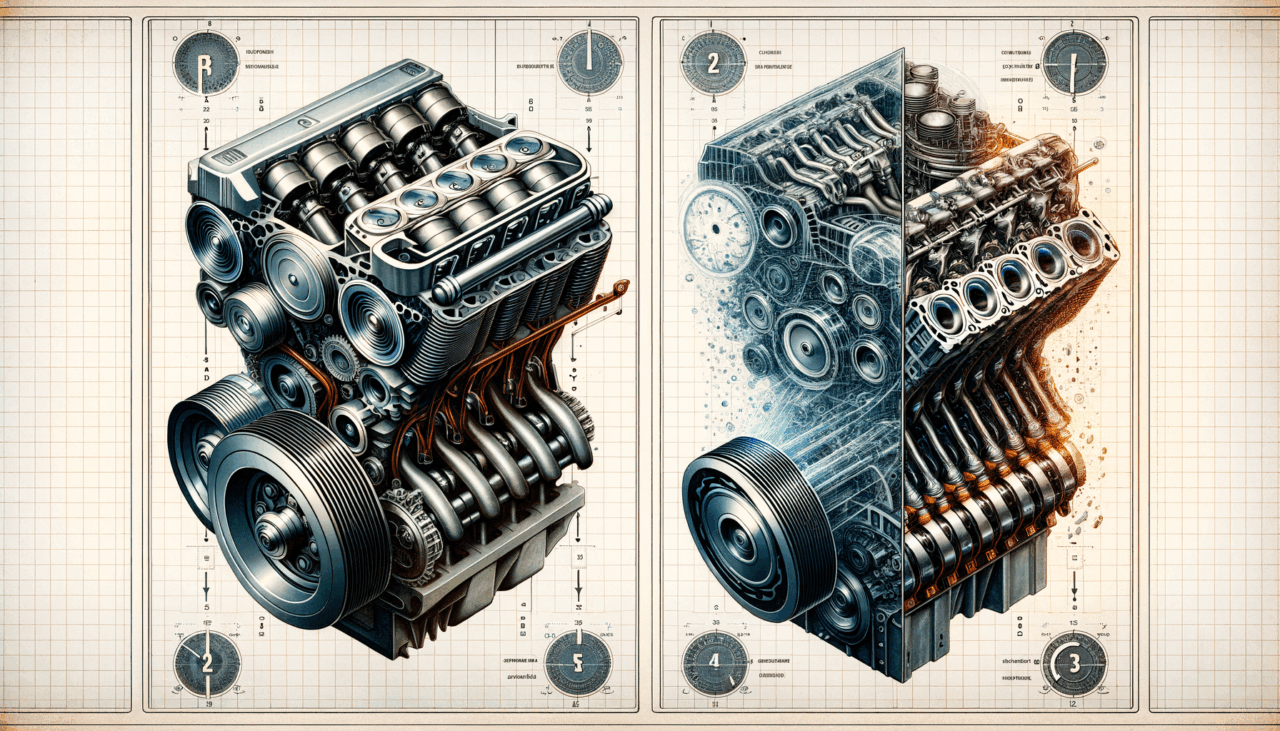3-Cylinder vs. 4-Cylinder Engine: What’s More Reliable?
When it comes to choosing an engine for your vehicle, the debate between 3-cylinder and 4-cylinder engines often leaves car enthusiasts scratching their heads. As we embark on this journey to demystify these mechanical marvels, let’s remember the Nigerian proverb: “The tortoise said that it is the quiet ones you should fear, not the loud ones.” In the automotive world, this means that it’s not always about power and noise; sometimes, reliability speaks louder than horsepower.
In this article, we’ll dive deep into the world of 3-cylinder and 4-cylinder engines, comparing their characteristics, and ultimately asking: What’s more reliable? As they say back home, “The eyes that have seen the ocean cannot fear the lagoon.” With this guide, you’ll be equipped to make an informed decision without fear.
Characteristics of 3-Cylinder Engines
-
Compact and Lightweight: The 3-cylinder engine is like the nimble gazelle of the savannah—light on its feet and quick to respond. Its compact size makes it ideal for small to mid-sized vehicles, providing excellent maneuverability and ease of handling.
-
Fuel Efficiency: Just as a small pot makes the best soup, the 3-cylinder engine is known for its impressive fuel economy. By reducing the number of cylinders, less fuel is required, which means more miles per gallon and fewer pit stops at the fuel station.
-
Lower Emissions: This engine is the environmentally conscious cousin in the family. With fewer cylinders, it generally produces lower emissions, making it an attractive option for eco-friendly drivers who want to leave a smaller carbon footprint.
-
Vibrations: Like a young drummer finding his rhythm, the 3-cylinder engine can sometimes struggle with balance, leading to vibrations. However, modern engineering techniques have significantly improved this aspect, ensuring a smoother ride.
-
Cost-Effective: As they say, “A penny saved is a penny earned.” The 3-cylinder engine is often less expensive to manufacture and maintain, making it a cost-effective option for budget-conscious buyers.
Characteristics of 4-Cylinder Engines
-
Power and Performance: The 4-cylinder engine is like the seasoned warrior—strong, reliable, and ready for battle. It offers more power and better performance, making it suitable for a wider range of vehicles, from sedans to SUVs.
-
Smooth Operation: With an extra cylinder, the 4-cylinder engine runs smoother and quieter, providing a more comfortable driving experience. It’s like the wise elder who knows how to maintain harmony in the village.
-
Versatility: This engine is as adaptable as a chameleon, capable of being turbocharged or naturally aspirated to suit different driving needs. Whether you’re city cruising or off-road adventuring, the 4-cylinder engine can be tailored to fit.
-
Fuel Consumption: While not as frugal as its 3-cylinder sibling, the 4-cylinder still offers respectable fuel efficiency, especially in modern models equipped with advanced fuel-saving technologies.
-
Durability and Longevity: In the words of our ancestors, “Good things come to those who wait.” The 4-cylinder engine is often praised for its durability and longevity, making it a reliable choice for those who plan to keep their vehicles for the long haul.
Comparative Table: 3-Cylinder vs. 4-Cylinder Engine
| Feature | 3-Cylinder Engine | 4-Cylinder Engine |
|---|---|---|
| Size and Weight | Compact and lightweight | Larger and heavier |
| Fuel Efficiency | Higher fuel efficiency | Moderate fuel efficiency |
| Emissions | Lower emissions | Moderate emissions |
| Vibrations | Potential for more vibrations | Generally smoother operation |
| Cost | Typically more cost-effective | Generally higher initial cost |
| Power and Performance | Adequate for small vehicles | Higher power and performance |
| Versatility | Limited versatility | Highly versatile |
| Durability | Good longevity with proper maintenance | Often longer-lasting and more durable |
Conclusion
In the grand tapestry of automotive engineering, both 3-cylinder and 4-cylinder engines have their place. Choosing between them is much like picking between two well-crafted tools—each has its strengths, and the right choice depends on your specific needs. Remember the words of wisdom: “The best time to plant a tree was 20 years ago. The second-best time is now.” The same applies to making informed decisions; the best time is now.
Whether you lean towards the agile, fuel-efficient 3-cylinder or the powerful, versatile 4-cylinder, understanding their characteristics ensures you drive away with confidence. In this tale of reliability, may your choice lead to many smooth and safe journeys ahead.

Comments (0)
There are no comments here yet, you can be the first!